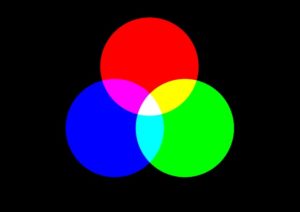
There’s no denying the fact that liquid-crystal displays (LCDs) are popular. They are found in countless types of electronic devices, including TVs, smartphones, tablets, computer monitors, human machine interfaces (HMIs) and more. LCD, in fact, currently ranks as the most common display technology. More electronic devices use LCD than all other display technologies.
LCDs, of course, feature many different parts. In addition to liquid pixels and backlighting, they feature a color filter. The color filter is arguably one of the most important parts of an LCD. Without it, an LCD won’t be able to produce colored images. What is the color filter exactly, and how it work in an LCD?
What Is the Color Filter?
The color filter is a part of an LCD that works in conjunction with the backlighting to produce colored images. It’s located in front of the backlighting. When an LCD is turned on, the backlighting will emit light that passes through the color filter. The color filter lives up to its namesake by filtering specific colors. As a result, only light in the appropriate colors will reach the top layer.
How Does the Color Filter Work?
Contrary to popular belief, the color filter doesn’t consist of a single layer. Rather, it consists of multiple layers. Most color filters feature three separate layers. They have a layer for red light, a layer for green light and a third layer for blue light. All three layers are installed on top of each other where they are able to filter colored light produced by the backlighting.
By default, the backlighting will produce plain white light. Images, of course, require colored light. Without colored light, you won’t be able to see the images on an LCD. The LCD will simply display an all-white image that’s devoid of any color. That’s where the color filter comes into play. As light travels from the backlighting through the color filter, the color filter will block the unnecessary colors.
Backlighting and Color Filters: What You Should Know
Color filters can’t work without backlighting. All color filters require backlighting to produce colored images. Backlighting is a lighting system that uses one or more bulbs to produce light. There are different types of backlighting for LCDs, some of which include light-emitting diode (LED) and electroluminescent (EL). Whether an LCD has LED or EL backlighting, though, it will require a color filter. The color filter sits in front of the backlighting where it’s able to filter unnecessary colors and, thus, create colored images.
